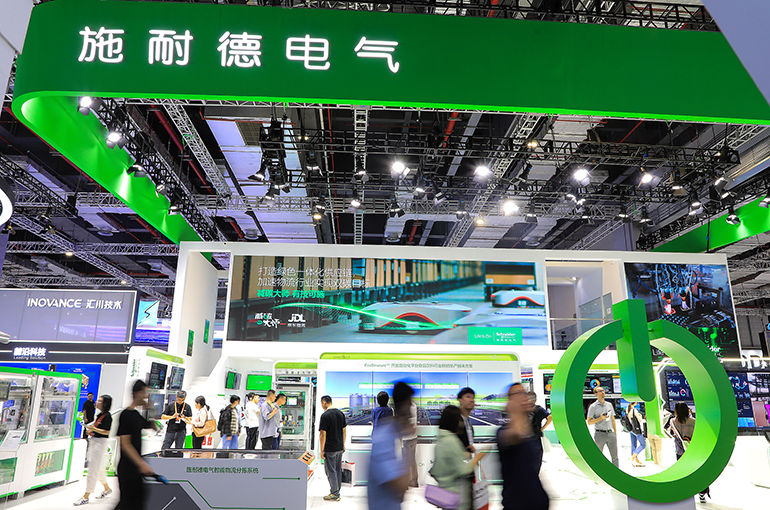 Global Companies Turn China Experience Into Edge in Worldwide Markets
Global Companies Turn China Experience Into Edge in Worldwide Markets(Yicai) Sept. 26 -- Foreign companies at the 25th China International Industry Fair in Shanghai told Yicai they are intensifying localization efforts to adapt to market competition and optimize product strategies, while also turning their China experience into a source of global competitiveness.
Xiong Yi, senior vice president of Schneider Electric China, said vitality in the industrial intelligent manufacturing sector has grown significantly this year, supported by new supply chain-related policies.
The 25th CIIF, a major industrial exhibition, is taking place in Shanghai from Sept. 23 to 27. The event features nine themed shows, including robotics, energy systems, and green and low-carbon technologies.
“Since the beginning of this year, we have launched a series of China research and development-driven products. These products not only have numerous practical applications in China but also feature controllable costs, efficient supply chains, and rapid response service support,” Xiong said. He added that the maturity of Chinese technology and supply chains is enabling multinational firms to accelerate innovation in China, producing products with global competitiveness.
China is one of Schneider’s four major global R&D hubs. Since 2019, its China investment has grown at a compound annual rate of more than 18 percent.
Yang Gang, president of German machine tool maker Trumpf in China, told Yicai that when foreign companies first entered China, local R&D teams focused mainly on matching and debugging. Today, they are tasked with developing solutions for both local and global markets. “Being able to grow together with the Chinese market and stand at the forefront of technology in specialized fields makes the Chinese teams very excited,” Yang said.
Trumpf China reported sales of EUR515 million (USD600 million) last year, with localized production accounting for 30 percent and R&D staff exceeding 10 percent of its workforce.
China as a Benchmark
Executives from several multinational firms said China’s push for digitalization and intelligent transformation is compelling them to cut costs and improve services. These experiences increasingly serve as benchmarks for their global operations.
In response to China’s demand for “extreme cost-performance” products that are “good enough,” many foreign firms are adjusting their strategies. For example, at the CIIF, Schneider Electric showcased multiple innovative products and solutions, increased related investments, and jointly released a “5G + Edge Computing” report with partners. Its Shanghai Putuo factory has adopted integrated solutions that help improve labor productivity.
Chinese innovation is also integrating more deeply into the global industrial chain. JAKA Robotics unveiled its industrial embodied intelligence platform at the fair, with products now sold in multiple countries and a global sales increase of 59 percent in 2024. Meanwhile, Siemens highlighted innovations from Chinese startups, including PsiBot’s picking and packing robot, which can reduce costs by more than 30 percent.
Xiao Qian, president of the East Asia division of the Global Electronics Association, said China accounts for about one-third of the global electronics supply chain capacity. With such scale, he noted, it is wise for foreign investors to increase their commitment to a China-centric strategy.
Zhan Yubo, director of the research office at the Shanghai Academy of Social Sciences’ Institute of Economics, previously told Yicai that foreign capital initially brought technology and investment while China provided supporting services. Today, however, China has made major advances in many fields, prompting shifts in how both China views foreign capital and how foreign investors view the Chinese market so both sides can now regard each other as equals, Zhan concluded.
Editor: Emmi Laine